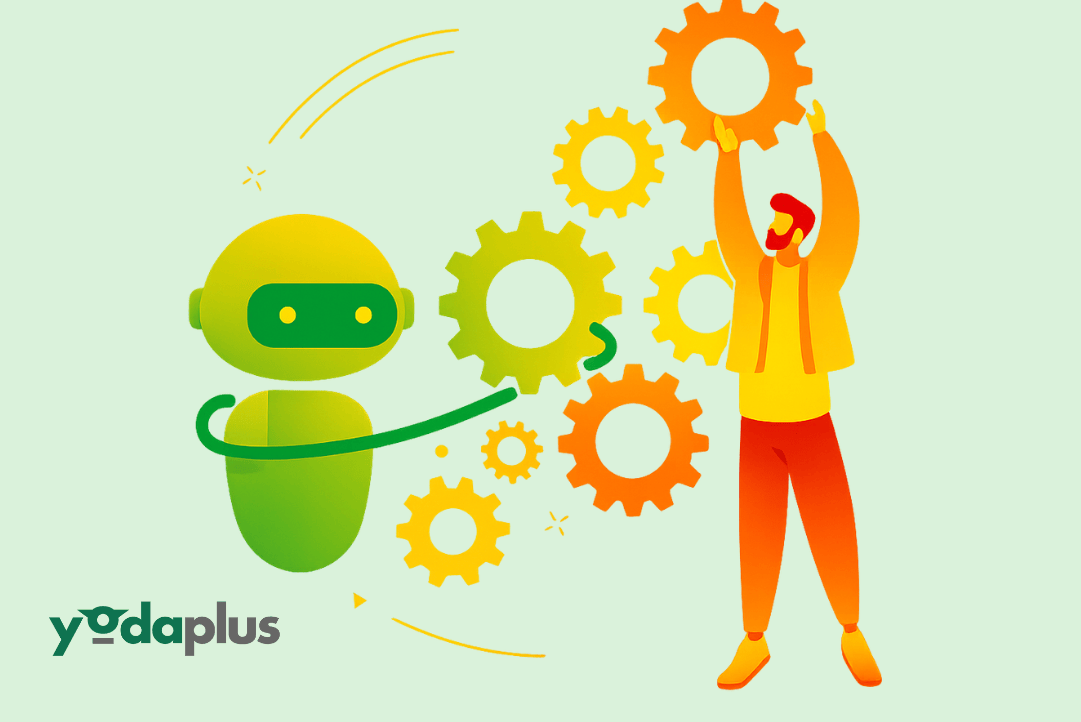
Agentic AI Observability and Evaluation Metrics
November 17, 2025 By Yodaplus
Tracking how AI agents behave is becoming an important part of modern Artificial Intelligence in business. Many companies now use agentic AI for data analysis, workflow automation, AI applications, and decision support. These intelligent agents work inside multi-agent systems, autonomous systems, and agentic AI platforms. When AI agents generate insights or make decisions, teams need a clear way to measure output quality. This is where observability metrics and evaluation methods help.
Agentic AI observability is the process of monitoring AI agents, understanding their actions, and checking if their output is reliable. It allows teams to see how autonomous agents reach a result. This matters in areas like AI in logistics, AI in supply chain optimization, digital retail solutions, and financial analysis, such as what is equity research. Strong evaluation metrics help organizations trust AI powered automation and make responsible AI practices part of daily work.
Why observability matters for AI agents
Traditional artificial intelligence systems did limited tasks. Modern AI agents and agentic AI frameworks use machine learning, Deep Learning, Neural Networks, Self supervised learning, NLP, and LLM models to solve more complex problems. They may extract patterns, complete workflow agents tasks, read ship documents, support knowledge based systems, or manage AI driven analytics.
Without observability, teams cannot know why an agent made a suggestion. This creates AI risk management issues and reduces reliable AI decisions. Observability metrics give a clear view of reasoning, output steps, and accuracy. The goal is not perfect predictions. The goal is explainable AI, safe decision making, and better AI innovation.
Key observability metrics for Agentic AI
Below are useful ways to evaluate output quality in agentic AI systems.
1. Accuracy and correctness
Accuracy checks if an AI agent output matches expected results. It can be measured through sample datasets, human review, or comparison with known answers. It is useful in AI agent software for search, summarization, or analysis. Accuracy is important with generative AI and autogen AI tasks because LLM content may contain errors.
2. Traceability and reasoning steps
Traceability shows how the AI agent reached a final result. It may include reasoning logs, prompt engineering history, or stored traces. Traceability supports explainable AI and builds trust. It is especially useful in AI workflows built with Crew AI, MCP, and similar agentic AI tools.
3. Consistency and stability
Consistent output means the agent produces similar results under similar conditions. Stable behavior helps organizations use AI agents in autonomous AI systems, AI system orchestration, fleet document checks, and digital retail transformation. Inconsistent results reduce reliable AI use cases.
4. Latency and decision time
Latency measures how long the agent takes to produce output. Fast response is important in multi agent systems and autonomous agents. It improves AI in supply chain optimization, port logistics, Navigation safety forecasting, and AI in shipping.
5. Safety and compliance
Some industries need strong compliance checks. Maritime compliance needs valid ship documents and rules from ISM Code, SOLAS, MARPOL, and Port State Control guidelines. AI must support regulatory adherence, audit readiness, and inspection readiness. Safety checks reduce risk in workflow agents and agentic AI platforms across sectors.
Agentic AI evaluation methods
Evaluation methods help verify that AI agents follow expected behavior.
Agentic AI applications can use these methods with generative AI software, AI models for semantic search, and vector embeddings for efficient information retrieval.
Observability in modern AI frameworks
Different agentic frameworks and tools handle observability in unique ways. Teams may compare Autogen vs LangChain, MCP vs LangChain, LangChain vs MCP comparison, autogen MCP, or mcp use cases depending on the project. Some platforms focus on structured output, while others use workflow supervision and monitoring logs.
A good ai agentic framework includes:
-
clear logging
-
easy trace explanation
-
prompt tracking
-
vector embeddings tracking
-
safe model use
-
performance insights
These features support reliable AI results across industries.
Future of evaluation in agentic AI
Agentic AI will grow as organizations adopt AI driven analytics and automation. Future AI agent evaluation may include emotional tone tracking, knowledge graph validation, and self-healing workflows. As AI becomes part of global trade, security, and enterprise decision making, evaluation methods will continue to evolve.
Conclusion
Agent observability allows users to see how AI agents think and act. Clear evaluation metrics support responsible artificial intelligence solutions, safe autonomous agents, and reliable AI workflows. Organizations that combine observability, monitoring, and AI risk management will be ready for the Future of AI, including new agentic AI capabilities and advanced autonomous systems.
Agentic AI observability is not only a technical requirement. It is a foundation for trust and better decisions in AI powered automation, Conversational AI, and intelligent agents across digital retail solutions, logistics, and knowledge-based systems.
